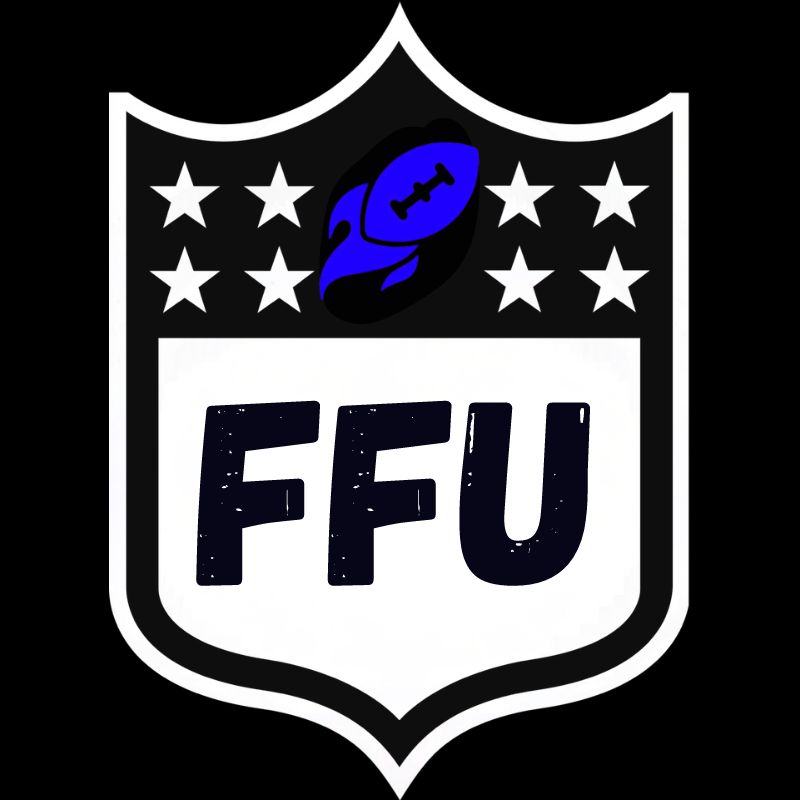For the general public, a standard fantasy football league suffices. If you’re reading this article, you may have grown weary of normal leagues and would like to try something new. Crash Course, a Fantasy Football Universe series, delves into unique formats. So, let’s start with Defensive Dominance: Tackling Success in IDP Leagues.

How Does it Work?
Let’s get this out of the way early, this is not a beginner’s format and is intended strictly for the most hardcore of football lovers. Even seasoned IDP veterans can sometimes drown in the depths of an IDP league.
There are many, and I mean many variations of IDP so we will get into that later. For now, all you need to know is that you will now be drafting defensive players. That’s not to say that you will only be drafting defensive players, in fact, now you will be drafting both sides of the ball which can be a scary and exhilarating twist on fantasy football.
How is it different?
This format is terrifying for even a seasoned fantasy player but once you try it you will love it. Now, every play in a game matters. In a traditional fantasy football game, we only care what the offensive players do, but in this format every player on the field matters.
You cannot truly appreciate this format until the first time you have won a matchup on a last-second sack. It’s a feeling like no other. This format is the most extreme and non-traditional format you can play, but for those long-time fans who think they know enough about defense, it’s a great game.
How does the Draft work?
The draft is still subject to league preference. It can be dynasty or redraft, the only thing that is universally true is that the draft is going to be deep. An IDP dynasty league can often go 40-50 rounds, while even a small redraft IDP league will typically go at least 20 rounds. With an entire second side of the ball to draft for, it’s simply impossible to do a traditional 15 or 16-round draft.
The draft will be impacted heavily by the exact roster construction, but we will go deeper into the roster below.
A look at the Rosters
Rosters are open to league preference, but as I stated above, they will be deep. For this article, I will go into a few of the more popular variations of IDP leagues to discuss their rosters.
Deep IDP (Expert)- this format is not the one you want for an IDP rookie. In this format, you draft 10 starters on offense as well as 10 starters on defense. This format is easily the deepest and will often have drafts that go longer than 40 rounds. Here is a look at the draft board for a full IDP league I participated in this season, it’s redrafted and is unlike anything you will see in fantasy football.
There are two versions of Deep IDP that I will quickly discuss:
IDP- many platforms such as Sleeper, only offer basic IDP rosters. A basic IDP roster is one where the only IDP positions available are Defensive Linemen (DL), Defensive Back (DB), Linebacker (LB), as well as IDP Flex spots. This slightly devalues IDP players as it allows for a little more flexibility in your lineup.
True IDP- if you want to play in the most difficult of IDP formats, True IDP is for you. In a True IDP league, there are much more specific position classifications. This format takes the original positions and breaks them down into two further subcategories. I should note that only a handful of fantasy platforms have this option.
Defensive Linemen are broken down into defensive linemen and defensive ends. Defensive Backs are broken down into safeties and cornerbacks. Linebackers are broken down into Outside and Inside Linebacker.
This format makes IDP far more important as there can be significantly less valuable options at positions like defensive linemen. In this format it’s particularly advantageous to have players with dual eligibility as an edge rusher, with defensive lineman eligibility will massively outscore a traditional up-the-middle lineman who is dependent on sack totals.
Half IDP (Intermediate)- this is exactly what it sounds like, it’s the halfway point between a beginner league and a full expert league. While a beginner IDP league will often only feature two starting IDP slots that may not even be positional and could simply be IDP flex spots, a half IDP league steps it up a little bit. A great example of this is the Draft Night Out/ IDP Guys IDP League at the 2024 FFExpo in Canton Ohio, which I participated in. Here is a look at the draft board for that league, it is a redraft league.
IDP (Beginner)- this is the most basic of IDP leagues and I suggest any first-time player starts here. I know when I did my first IDP league it was this format and even this seems overwhelming at first until you learn the ropes. A beginner IDP league will typically be one where you start a regular 10-offensive player squad but only have to start two or sometimes three IDP players.
This format allows you to gently dip your toe into the IDP pool without drowning. It also allows you to wait a little bit later to draft IDP players and leaves you more options on the IDP waiver wire in case you drafted a dud. The downside to this version is that it sees IDP players making a minimal effect on the league. Here is a look at the first IDP league I played in, this is the draft board from the 7th season of the league, it’s a redraft league.
How does the Waiver Wire work?
The waiver wire works just like any other league and is subject to format and roster settings, the main difference is that there tend to be more options available at each position due to the increased number of positions that are now being started.
The waiver wire will also be your friend as the extra draft positions will leave you some solid streaming options that you will likely need as it because much tougher to handcuff by and injury replacements unless you have the deepest of benches.
How the scoring works
The scoring on the offensive side of the ball is not typically affected but in most IDP leagues things like superflex, tight end premium, and PPR scoring are used in an attempt to try and create balanced scoring across all positions.
Most leagues will significantly elevate the scoring for IDP players as the “standard scoring” on most platforms leaves them well behind the production of the offensive players. The key in this format is to try to balance the scoring across all positions as I stated above.
It’s key to look through the specific IDP scoring settings for your league as changes can give a massive advantage to different IDP positions as we see in PPR leagues where pass-catchers are king.
An increase in tackle value will give a big edge to defensive backs that are targeted often and play for bad teams as they will see lots of action. This can also benefit linebackers and defensive ends who are often in on tackles, whereas it nukes the value of interior defensive linemen.
A league with monster sack-scoring benefits linemen heavily and even more specifically edge rushers immensely. In this format, the elite pass-rushers are going to fly off the board.
The format that benefits the defensive backs most, besides high-tackle scoring, is high scoring for interceptions. This doesn’t help linemen at all and massively swings the value. This is why you want to evenly balance the scoring across the board.
It is important to note that in this format, name recognition is the least important. A great example of this is Jets defensive back Suace Gardner. Sauce is an elite shutdown defender in the NFL, but is almost useless in fantasy football as teams simply avoid throwing in his direction. It’s often better to have bad defensive players who will see high opportunities over the elite shutdown studs.
The Consensus Strategy
- Read Your Settings: This is common sense. Read your scoring settings to determine which IDP position has the most value and which is likely to have the least depth. This helps you to know which IDP positions you can punt and which ones you need to prioritize early in the draft.
- Target Defenders on Bad Teams: As counterintuitive as it sounds, draft defenders on bad teams. An IDP player on an offense that can’ score is going to be on the field often which will give him increased chances to score fantasy points. and half the battle is on the field.
My Strategy
- Draft Dual Eligibility Players: As I said many times above, this strategy can be more valuable in True IDP leagues. Elite players with eligibility at multiple positions are a precious resource. Especially if it’s a player like TJ Watt who can be shifted from a position like DE where the pool is deep to a position like DL where the elite options don’t exist. A great way to put this into context is to remember the elite value Taysom Hill had as a tight end. A player who was mediocre and at best a top-30 quarterback, would find himself in the ranks with the elite tight ends.
- Green Dot Defenders: This one deserves a full article in itself, which I wrote previously and is available here. Essentially this strategy involves targeting the green dot player on each team. A green dot defender is the playcaller and captain for that side of the ball. On offense it’s always the quarterback, on defense it’s normally a linebacker in the middle of the field. The reason this is valuable is because the green dot guarantees that the player will be on the field for most or all of the defensive plays for their team. As I said before, being on the field is half the battle.
- Positional Advantage: This strategy is dependent heavily on scoring but what it boils down to is determining which positions have the most value over a replacement player at that position. As far as your traditional IDP scoring leagues are concerned, the pecking order is; defensive linemen first with priority to edge rushers, linebackers second with priority to green dot players, with defensive backs last. This is because defensive backs are typically the lowest-scoring and have the most depth.
In Closing
This format is for the truly hardcore fans who love every aspect of the game. The easy way to break down the basic positions of an IDP league is to think of defensive ends as you would think of a quarterback in a superflex league. Think of linebackers the same as running backs with their being decent depth but a definitive tier break. The elite running backs are on the same level as the green-dot linebackers and need to be snatched up early. Defensive backs are like wide receivers, there are lots of them that produce well for fantasy and you can find great options late. While there are elite ones, it’s sometimes not a great idea to pay a premium price for them.
IDP is a labor of love and can range from the most basic of changes to almost an entirely different game. As I stated early on, I suggest you dip your toe in lightly, going from regular fantasy football to a True IDP expert league can be the exact thing that turns you off to IDP forever.
Don’t forget to check out the rest of the Crash Course Series.

